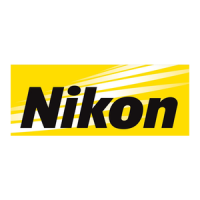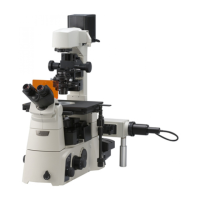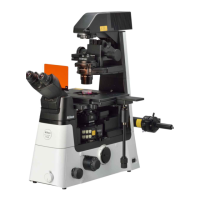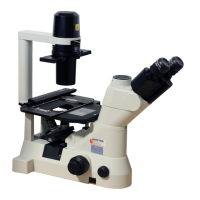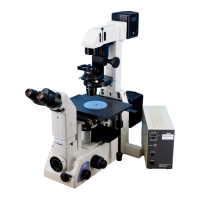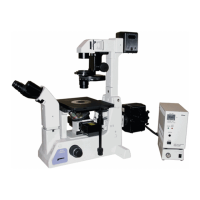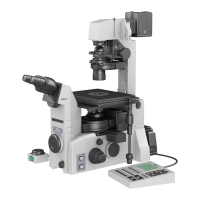Chapter 3 Operation
3.11 Objective Operation
75
3.11.4 Oil Immersion Objectives
Figure 3-34 Oil immersion objective (example)
Objectives with the “Oil” label are oil immersion
objectives.
When using an oil immersion objective, fill the space
between the objective tip and the specimen with oil
(Nikon Immersion Oil). When performing epi-fl
microscopy with an epi-fl oil immersion objective,
use non-fluorescent oil.
Applying Oil
Figure 3-35 Applying oil immersion
1. Lower the objective by rotating the focus
knobs.
2. Taking care not to let bubbles form, apply the
bare minimum amount of oil onto the tip of
the objective.
If too much oil is applied, the excess oil may
overflow onto the stage and other parts. Use as
little oil as possible (just enough to fill the space
between the objective tip and the specimen), and
take care not to allow the oil to get on other
parts.
3. Place the specimen onto the stage.
4. Slowly raise the objective by rotating the
focus knobs, allowing the oil to fill the space
between the objective tip and the specimen.
5. Check that no air bubbles have formed in the
oil.
Bubbles in the oil will adversely affect the
viewing of the image. Refer to the following
section and check for bubbles.
“Oil”
marking
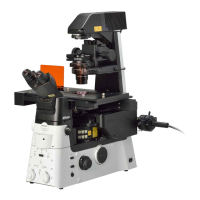
